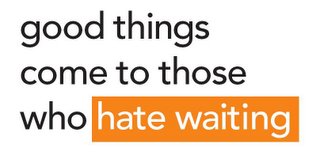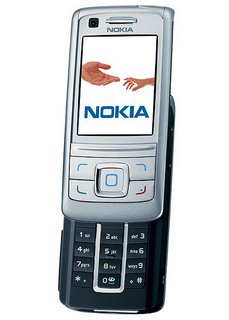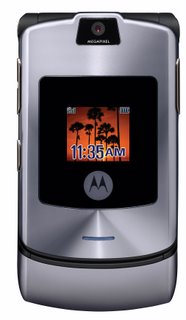Tuesday, December 06, 2005
3G Broadband Connect Official Launch

Today Cingular officially launched HSDPA/UMTS service branded as BroadbandConnect. The broadband connect service is targeted at business customers. It is live in 16 cities across the US including Austin, Baltimore, Boston, Chicago, Dallas, Houston, Las Vegas, Phoenix, Portland, Salt Lake City, San Diego, San Francisco, San Jose, Seattle, Tacoma and Washington D.C. Cingular takes the title as the first HSDPA provider with wide coverage in the world. HSDPA will feature an average speed of 400-700kbps with a burst rate of upto 1.8mbps in its first iteration. HSDPA will allow for seamless integration with existing data technologies including EDGE and GPRS. This includes seamless "hand-down" from
 3G to 2.5 and 2G voice and data service. At first release "hand-up" but the specification is provided for with HSDPA and will more than likely be added in the future. We can assume that this is because its much more likely for someone to leave a 3G service area than enter one when traveling.
3G to 2.5 and 2G voice and data service. At first release "hand-up" but the specification is provided for with HSDPA and will more than likely be added in the future. We can assume that this is because its much more likely for someone to leave a 3G service area than enter one when traveling.The best part of Cingular's new HSDPA service is the ability for simultaneous voice and data transfer, something that is not available with competitors 3G CDMA EV-DO networks at the time.
In addition the move to 3G will provide great reductions in cost for calls and data transfer on Cingulars network, leaving more revenue for expansion, upgrades, research and features.
Monday, December 05, 2005
New handset speculation part 1

So it is a sure bet that Cingular will be releasing the HTC Tornado/Faraday and the HTC Wizard, rebranded as the Cingular 2125 and the Cingular 8125. HTC devices with Cingular have normally carried the Audiovox name brand, but it seems that Cingular has gone straight to the source with these new devices. Pictures have already started appearing online of the 2125 with Cingular branding. Like the v551 and other business oriented handsets, they will come in camera/no camera varients to appease companys with security concerns. That aside what can we expect from Cingular in the coming months, namely first quarter of 06?
Towards the end of this quarter in 05 Cingular has turned HSDPA, the latest 3G revision of GSM, on in several markets across the US. UMTS is already live in the majority of the major markets, and is ready and wating in most others. That being said we can probably expect one or two 3G handsets sometime in the first quarter of 06. Our first assumption is in the direction of Nokia.
Assumption #1:
Currently Cingular only has three Nokia handsets that they are really pushing post-paid side, the Nokia 6010, Nokia 3120 and the Nokia flip 6102. The ill-fated 6230 was the only non-smartphone Nokia with bluetooth capability, and on the smartphone side the 6682 has had more than its fair share of recalls from both Cingular and Nokia. Looking in the direction of 3G and Nokia specifically at UMTS 1900 (as opposed to UMTS 2100) we have the Nokia 6282 and the Nokia N80 both of which have been approved to some extent by the FCC in the US. Assuming that Cingular will not want to loose any more money that they already have off of the 6682, and that Cingular will want to fill the void of a high-end-pre-smartphone mobile left by the 6230 we are going to shoot for the 6282. With bluetooth, edge, umts, 1 megapixel camera and expansion slot, the 6282 really fits the bill.
Assumption #2
Again looking in the "high-end-pre-smartphone mobile" category, our attention focuses on the Razr. Already showing its age, and definately being bought up like its going out of style the Razr is very likely to be replaced. Cingular has knocked down the price significan
 tly from its original ~$500 retail price tag to sub $100, in addition it is reported that the silver color is in low supply. Why would Cingular choose to forego profits on such a popular phone you ask? Because they want to clear the inventory for something new. Verizon, T-Mobile and even Altell have all come out with the Razr in one form (or color) or another. Cingular who scored the exclusive with Motorola in the first place is more than likely scheming to profit off it on another go. That brings us to the V3i. The V3i shares all of the basic features of the original GSM Razr with the addition of a memory card slot, upgrade to a 1.23 megapixel camera, and.... iTunes. If anyone has walked in to a corporate store and seen the iTunes display, they have no doubt noticed its nakedness. The display was made to hold three devices, yet it only holds the Rokr at the moment. The V3i would no doubt be a nice addition, and a good slap in the face to Cingular's competitors. "Oh yours is pink how cute, ours is new with a memory slot, better camera oh and just for kicks music software by Apple"
tly from its original ~$500 retail price tag to sub $100, in addition it is reported that the silver color is in low supply. Why would Cingular choose to forego profits on such a popular phone you ask? Because they want to clear the inventory for something new. Verizon, T-Mobile and even Altell have all come out with the Razr in one form (or color) or another. Cingular who scored the exclusive with Motorola in the first place is more than likely scheming to profit off it on another go. That brings us to the V3i. The V3i shares all of the basic features of the original GSM Razr with the addition of a memory card slot, upgrade to a 1.23 megapixel camera, and.... iTunes. If anyone has walked in to a corporate store and seen the iTunes display, they have no doubt noticed its nakedness. The display was made to hold three devices, yet it only holds the Rokr at the moment. The V3i would no doubt be a nice addition, and a good slap in the face to Cingular's competitors. "Oh yours is pink how cute, ours is new with a memory slot, better camera oh and just for kicks music software by Apple"Assumption #3
Cingular has soft launched Push-To-Talk in a few markets nationwide and will likely complete a full launch nationwide in 06. The original launch was slated to include
 two handsets, the LG F7200 and the Samsung D357. At a rate of 9.99 per single and 19.99 per family rate, its basically free money for Cingular as it requires almost no additional resources to support so we can assume that in the future a good number of handsets carried by Cingular would support this feature. The 357 was recently recalled, leaving only the LG handset. There is only one problem however, Cingular's PTT service is completely proprietary -- it is not the same as the GSM variant floating around overseas. This is the main reason why so little information was available about the D357 and F7200 prior to launch, which makes assuming a future handset with this feature very hard to do. Nokia has a few handsets already overseas with the other GSM PTT service, and at least one here in the US -- the 6102. We wouldn't imagine it being too difficult for Nokia to rerelease a handset such as the 6102 with the Cingular PTT variation supported in its firmware. With this reasoning we can also look at Motorola. Moto is the king of PTT, they practially invented it for use with their iDEN network technology. With a history of handsets supporting this feature, again all we would need is a supporting firmware. So for this assumption we leave you with no specific model, but a definate need for an additional PTT handset.
two handsets, the LG F7200 and the Samsung D357. At a rate of 9.99 per single and 19.99 per family rate, its basically free money for Cingular as it requires almost no additional resources to support so we can assume that in the future a good number of handsets carried by Cingular would support this feature. The 357 was recently recalled, leaving only the LG handset. There is only one problem however, Cingular's PTT service is completely proprietary -- it is not the same as the GSM variant floating around overseas. This is the main reason why so little information was available about the D357 and F7200 prior to launch, which makes assuming a future handset with this feature very hard to do. Nokia has a few handsets already overseas with the other GSM PTT service, and at least one here in the US -- the 6102. We wouldn't imagine it being too difficult for Nokia to rerelease a handset such as the 6102 with the Cingular PTT variation supported in its firmware. With this reasoning we can also look at Motorola. Moto is the king of PTT, they practially invented it for use with their iDEN network technology. With a history of handsets supporting this feature, again all we would need is a supporting firmware. So for this assumption we leave you with no specific model, but a definate need for an additional PTT handset.